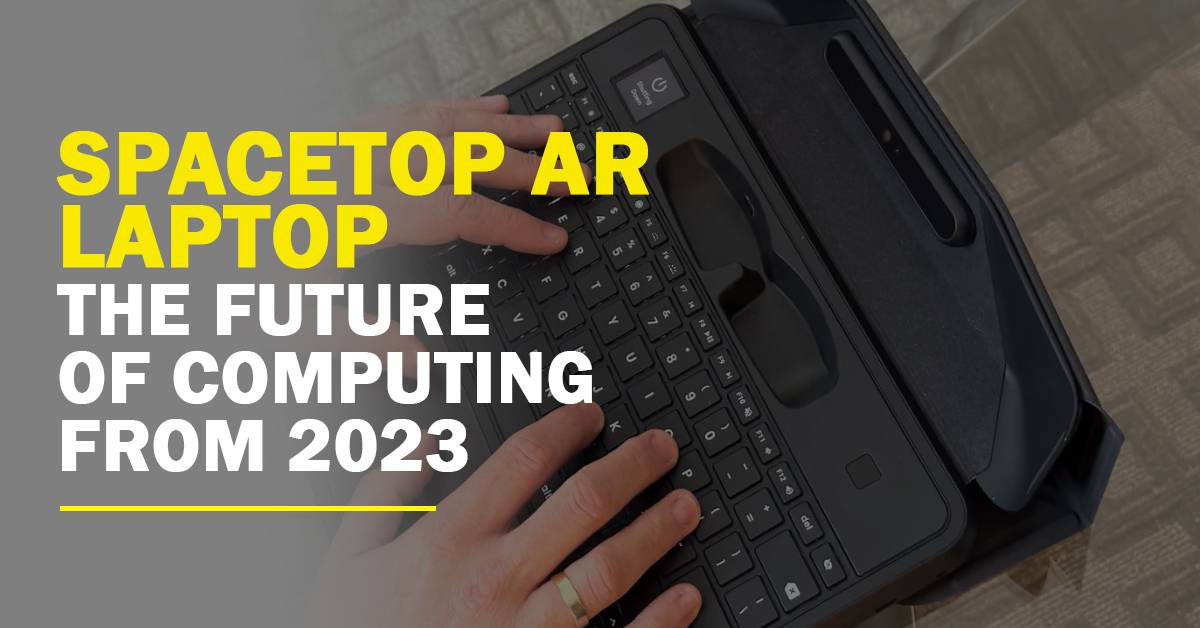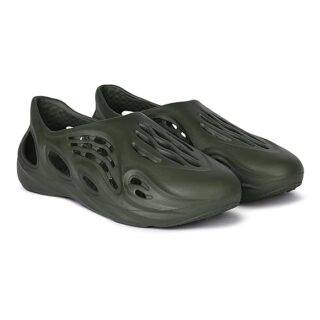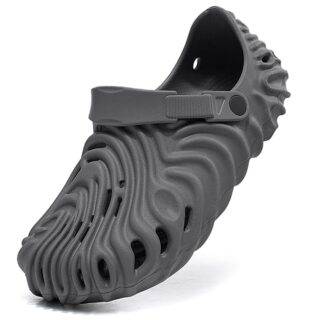
Table of Contents
ToggleIntroduction
The development of laptop computers in the early 1990s liberated employees from the restrictions of their workstations and allowed them to carry out their work in coffee shops, hotel rooms, and other distant locations. Although laptops have significantly improved in terms of weight and speed since the days of the early brick-like portable computers, one problem has remained: when working remotely, users are limited to a single, modest-sized screen.
Although portable displays are available, they just add to the weight of the laptop bag and begin to cast doubt on the concept of a genuinely mobile workplace. In an effort to address this problem, an Israeli firm by the name of Sightful has unveiled a laptop that, when used with a pair of linked Augmented glasses, completely separates the screen from the laptop and raises it above the user’s head, wherever they are looking.
About Sapcetop Laptop

The Spacetop glasses can display a screen up to 100 inches (254 cm) in whatever surroundings the user is working in. It is possible to generate the appearance of a complete 2K display by using two teeny 1080p screens. Instead of having numerous windows stacked on top of one another, as is the case on a standard laptop screen, the arrangement will enable multiple windows to be open side-by-side on a virtual screen dubbed the “Canvas” using a unique operating system called Spacetop OS.
Also provides a new degree of privacy when working in public areas, even when they are as confined as an airplane seat since the screen can only be viewed by the user and no one else. Additionally, because the glasses are transparent, there is no chance that you will miss what is occurring in the environment around you while utilizing the system.
About Sightful Company

The world’s first laptop with augmented reality, Spacetop, was developed by Sightful, an HCI firm committed to improving the environment for the work from anywhere movement. Sightful is a rapidly expanding team of 60+ employees with expertise in product management, UX/UI, core software, cloud, applications, marketing, computer vision, systems, and design.
It was founded by spatial computing veterans Tamir Berliner (PrimeSense acquired by Apple, Magic Leap) and Tomer Kahan (Broadcom, N-trig acquired by Microsoft, Magic Leap), as well as Tomer Kahan (Broadcom, N-trig acquired by Microsoft, Magic Leap). Its headquarters are in Tel Aviv, Israel, and it has offices in Taiwan, Singapore, Palo Alto, Los Angeles, and other places. Notable investors include Corner Ventures and Aleph.
Sightful is a human-computer interface (HCI) business that was established in 2020 by spatial computing veterans Tomer Kahan and Berliner (Broadcom, N-trig, bought by Microsoft, Magic Leap, and PrimeSense, all of which were acquired by Apple).
The business has a staff of more than 60 people with skills in design, marketing, computer vision, cloud computing, core software, UX/UI, and systems. Its investors include Corner Ventures, Aleph, and others; it has offices in Palo Alto, Los Angeles, Taiwan, and Singapore in addition to its headquarters in Tel Aviv, Israel.
Sightful focused on an immediate utility which advances human productivity, a personal passion of mine,” said Eden Shochat, equal partner at Aleph, a VC company that contributed some of the $61 million raised by Sightful. “They concentrated on building a product people can use now, rather than trying to convince the world that we need to live in a metaverse or create an entirely new way of working.
Features Of Spacetop Laptop

Will be equipped with the Qualcomm Snapdragon 865 CPU and an Aredeno 650 GPU. Given that Spacetop OS is built on an open-source Android version, it makes logical that this combination is often used to power mobile devices.
It will include two USB-C ports, one of which can be used to charge the device from 0% to 80% in less than two hours, 8 GB of memory, and 256 GB of internal storage. It will also have Wi-Fi 6 and Bluetooth 5.1 built-in.
The system’s dimensions are 1.57 inches (4 cm) in height, 10.47 inches (26.6 cm) in width, and 9.8 inches (24.9 cm). The keyboard and spectacles combination weighs 3.3 lb (approximately 1.5 kg). Built-in headphones are a feature of the eyewear.
Spacetop Hardware
Spacetop is a little laptop-like device, but instead of having a fold-out screen, it has a pair of augmented reality glasses that sit on top of the keyboard and touchpad within a folding shell. A relatively short, flexible wire that transmits power and data from the base connects the AR glasses to the “laptop” and tethers them to it. A touchpad, camera for video conferencing, and all the usual connectors are there.
You can see through the clear glass and displays of the glasses even when the power is off since they are augmented reality, not virtual reality. There are a number of small 1080P screens that, when activated, create the appearance of a 2K monitor. The panels move along with the user’s movements while the program simulates a 100-inch display. Similar to Bose Frame glasses, the glasses likewise have two tiny speakers close to but not over the ears.
How Spacetop ar laptop works?
The Spacetop AR laptop is a revolutionary new device that uses augmented reality to create a virtual workspace. The laptop itself has no screen, instead the user wears a pair of AR glasses that project a virtual screen onto any surface. The size of the virtual screen can be adjusted, and multiple windows can be open at the same time. This allows for a much more immersive and productive work experience.
Here are the steps on how the Spacetop AR laptop works:
- The user opens the laptop and puts on the AR glasses.
- The laptop boots up and the Spacetop OS is loaded.
- The user can then open any application or file that they want.
- The virtual screen is projected onto any surface in front of the user.
- The user can interact with the virtual screen using the trackpad or hand gestures.
The Spacetop AR laptop is still in development, but it has the potential to revolutionize the way we work. It offers a more immersive and productive work experience, and it can also be used for entertainment and gaming.
Next Step in Personal Computing?

Spacetop, which has been three years in the making and was developed by a group of more than 60 professionals in spatial computing, including former employees of Apple, Microsoft, and Magic Leap, is a strong contender to stand in for the coming of age of personal computing.
This, according to Sightful CEO Tamir Berliner, is the first usage of augmented reality that can be integrated into a user’s regular life. Up till now, AR has shown to have valid applications in the industrial, technical trade, scientific, and military fields. But it hasn’t yet penetrated routine consumer or commercial processes
Employs augmented reality to get over the physical limitations of conventional laptops by using specialized hardware and a unique spatial environment. The virtual desktop you view with this device has an average width of roughly 100 inches, which is far wider than the 13- or 14-inch laptops that are often used nowadays. The end result is a groundbreaking device that lets customers transport a sizable private, virtual office that they created and have personalized themselves.
Benefits of Spacetop Laptop

According to Berliner, who spoke to The New Stack, “Laptops have been important to all of us for decades, but the technology has not evolved with the work-from-anywhere, privacy-matters type mentality.” While augmented reality has a lot of promise and potential, it hasn’t yet found a practical application.
Spacetop Early Access is the first step in a journey that will result in a big paradigm change in a gadget that we all know and love at the ideal time.
Users of Spacetop may design their own workstations with whatever many virtual displays they need. Additionally, they may alter the design of their office to suit their own requirements. They can concentrate on their job without being sidetracked by clutter or unneeded windows thanks to this.
According to Berliner, is compatible with current browsers and other programs, allowing users to keep using their go-to programs. Because the user’s workplace is fully invisible to anybody not using the gadget, Also provides a great degree of privacy, according to the man.
According to Berliner, the Early Access program is intended for passionate early users of technology that is altering industries. “Sightful is encouraging people who love to be first, and work on the go, largely in Web apps, to come and purchase an EA Spacetop,” the man stated. However, prospective buyers would be best served to wait for a future generation if they wanted a powerful video editing or gaming computer.
While Early Access devices provide the whole augmented reality laptop experience, the user input will be utilized to customize the device hardware and software and will directly affect the release of Spacetop V1. said Berliner.
Laptop Built BY Wistron, An OEM Of Dell and HP

Taiwan’s Wistron (laptop body) and China’s NReal (glasses) are two important suppliers in both personal computing and augmented reality that is combined in Spacetop hardware. According to Berliner, a custom version of Android developed by the Sightful team powers the Spacetop.
“We’re expecting a lot of good use case ideas to come from outside the company and from the open source community,” Berliner said.
“We see the Spacetop as a basis for numerous novel Augmented applications that we had never considered before. In actuality, we have no clue where will lead us in the future.
A personal note: In my own demonstration session, I discovered that the environment feels snappy and simple to use while still enabling me to engage normally with others around, whether I’m on a Zoom conversation, working in Google Docs, evaluating a Figma design, or surfing the web.
How They Made Spacetop?

Sightful, which was previously called Multinarity, says it has raised $61 million in funding to date, with its lead investors being Corner Ventures and Aleph Capital. While we’ve seen many other ‘virtual desktop’ applications in the PC VR and standalone space, Sightful is trying to close the loop on making virtual desktop productivity… well, actually productive.
The company is hoping its all-in-one product—which essentially consists of the bottom half of a laptop, a pair of tethered AR goggles, and a custom software environment—will make for a streamlined virtual desktop experience that’s easy to use. Spacetop has a sort of dock in which to stow the glasses, and a ‘lid’, allowing the entire unit to be portable.
Sightful says Spacetop uses a pair of customized Nreal Light AR goggles with 6DOF head-tracking, a 53° field-of-view, and 1,920 × 1,080 resolution per eye.
Inside the base (which includes a full keyboard, trackpad, and USB & DisplayPort ports) is a Qualcomm Snapdragon 865 processor, 8GB of RAM, 256GB of storage, along with enough battery for a claimed 5 hours of work.
There’s even a built-in webcam for video calls (though you might look a little strange wearing sunglasses with a cord coming out of them while you’re on video).
And yes, you read that right; with a Snapdragon processor this won’t be running Windows but rather the company’s own ‘Spacetop OS’, which we presume is built atop Android, though the company hasn’t said anything about compatibility with Android applications; instead it seems the first version of Spacetop will run almost exclusively on web apps, providing an essentially unlimited virtual desktop upon which to place them.
5 Reasons Why Spacetop Is Better
Infinite Monitor
Spacetop’s solution only exists in the virtual world because that isn’t achievable in the actual world. Although it isn’t the first to make that claim, it may end up being the most approachable. The ideal of endless screen space could finally come true with AR glasses that don’t make your head droop, a typical physical keyboard and trackpad, and a possibly more affordable price tag.
Total Privacy
You can’t really stop other people from peeping into your business if you have a lot of physical monitors, which is one reason why you wouldn’t want to have too many of them. That’s another reason why multi-monitor laptop accessories aren’t recommended in public settings since they just raise the possibility of others seeing information that ought to be kept private and confidential. A privacy screen is currently implemented in certain laptops and monitors, although it only functions on one display.
By completely doing away with displays, Spacetop finds a solution. Unless you start sharing it digitally with others, only you can see what’s on your screen in your own virtual bubble. Unauthorized eyes peeping at your nonexistent monitors will no longer be an issue, but people next to you who need to view them will be unable to do so until you hand over your glasses.
Better Posture
While laptops are excellent for portability, they are poor for comfort. Even with a huge laptop screen, you’ll always be craning your neck due to the screen’s persistent connection to the keyboard. To lessen some of the pain caused by that poor posture, even laptop users would attach a desktop display to their computers at work or at home. Naturally, since Spacetop lacks a screen, you are free to elevate your head to a position that is more comfortable and natural for you. Because there isn’t even a display to speak of, ergonomic monitor stands and arms are unnecessary.
Laser Focus
Given Spacetop’s design, it supports a very specific use case, one that revolves around productively using computer programs for work and a bit of personal time. It puts everything you need in front of you and around you, effectively blocking out visual distractions coming from the outside world. Whether you let virtual distractions get to you is something you get to decide on your own rather than having other people decide for you.
At the same time, Spacetop is a bit restricted in the applications you’ll be able to use. Its Android-based operating system and mobile hardware dictate what apps you’ll have access to, which won’t include every software under the sun, especially those that require Windows or macOS (unless you have access to a remote desktop of some sort). It also means little to no gaming, which might sound ironic for an AR platform. There will probably be some ways to get past these limitations, but it won’t be as convenient an experience as on a normal computer.
Complete Freedom
Almost all physical constraints on computing are eliminated with Spacetop, which essentially just requires the bottom half of a laptop. You can set up a workstation anywhere you want or need to, turning the whole globe into your workplace. If you can comfortably balance Spacetop on your lap, like a laptop should be able to do, you may not even need a table.
As a result, you can nearly forget about worrying that you won’t be productive simply because you’re away from home or the workplace or that you won’t be able to handle crises without your dependable desktop monitor.
The Company Isn’t Trying To Hide That Fact.

According to the company’s statement, “Sightful is encouraging people who love to be first and look into the future, who work on the go, who live largely in Web apps to come and purchase Spacetop.” “Potential customers would be better served to wait for a future generation if they want a monster machine for video editing or a hard-core gaming rig.”
Additionally, the company claims that it is not currently focused on utilizing the special 3D or spatial capabilities that come with AR (no 3D models floating in front of you), nor are they working on any novel inputs (no special gestures to move windows with your hands); all of which is a good idea in my opinion because it is always better to take baby steps than to make a hasty decision.
Although Spacetop’s concentrated functionality and all-in-one layout may have some advantages for virtual desktop productivity, the main obstacles to enabling this use-case go beyond just building a special software environment and bundling everything together.
I’ve tried a ton of different XR headsets and virtual desktop programs over the years, including utilizing them with a specialized keyboard, mouse, and even whole Mac and Windows environments. Despite having all the hardware I really need for my everyday tasks, there are still fundamental problems with the displays, including field-of-view, resolution, sweet spot, and comfort.
The concept of always having a large virtual desktop available is directly at odds with the Nreal goggles’ very small field of vision, despite their light weight.
It’s far more difficult to get a similarly sized virtual window “into the frame” when using actual side-by-side monitors since you have to move your head much more. This may become quite unpleasant very fast.
This problem is often made worse by the fact that many headsets have a narrow sweet spot, which makes it such that as you swivel your eyes, the image gets blurrier at the periphery. As a result, you must virtually center your whole head on any window if you want to view it with the highest level of clarity.
As transparent screens are used in the Nreal goggles, this presents a difficulty for resolution and readability because the windows that are floating in front of you will always have some degree of transparency.
FAQ
Most frequent questions and answers
The Spacetop Augmented Laptop is a cutting-edge device that merges the digital and physical workspace through the use of augmented reality. It uses advanced technology to project your digital work environment into your physical space, creating a fully immersive computing experience.
The Spacetop Augmented Laptop uses a combination of augmented reality (AR) technology, high-resolution displays, and advanced tracking systems. This technology allows users to interact with their digital workspace in three dimensions, providing a seamless blend of their physical and digital environments.
The Spacetop Augmented Laptop creates a fully immersive computing environment, making it possible to interact with digital objects as if they were part of the physical world. This opens up new possibilities for multitasking, data visualization, and collaboration.
The Spacetop Augmented Laptop features high-resolution displays for crisp visuals, AR technology for immersive computing, advanced gesture controls for intuitive interactions, and a high-performance processing unit for smooth operation.
Yes, the Spacetop Augmented Laptop is designed to run most traditional software applications. However, to take full advantage of its AR capabilities, software may need to be specifically designed or adapted for this new environment.











Leave a Reply